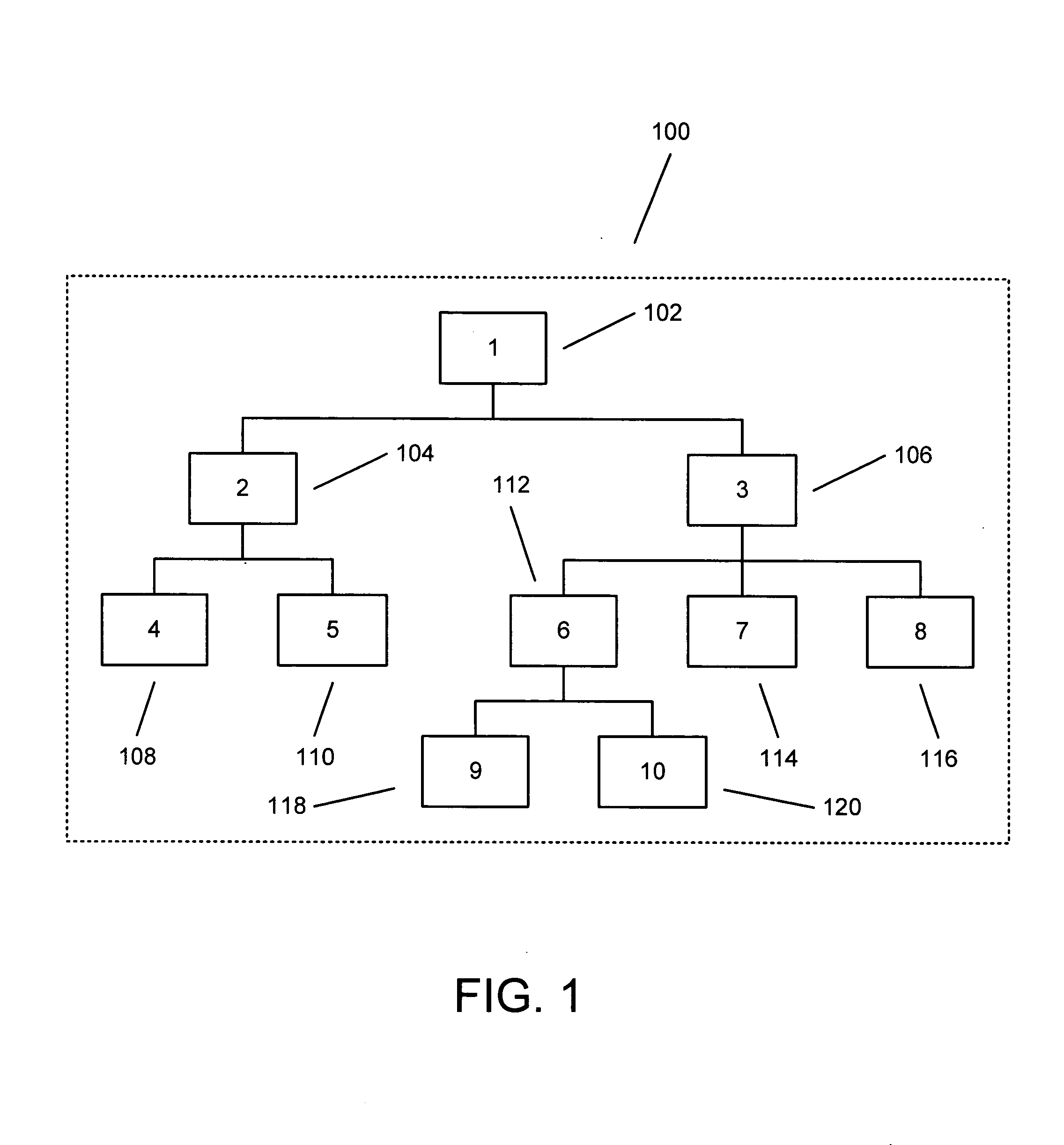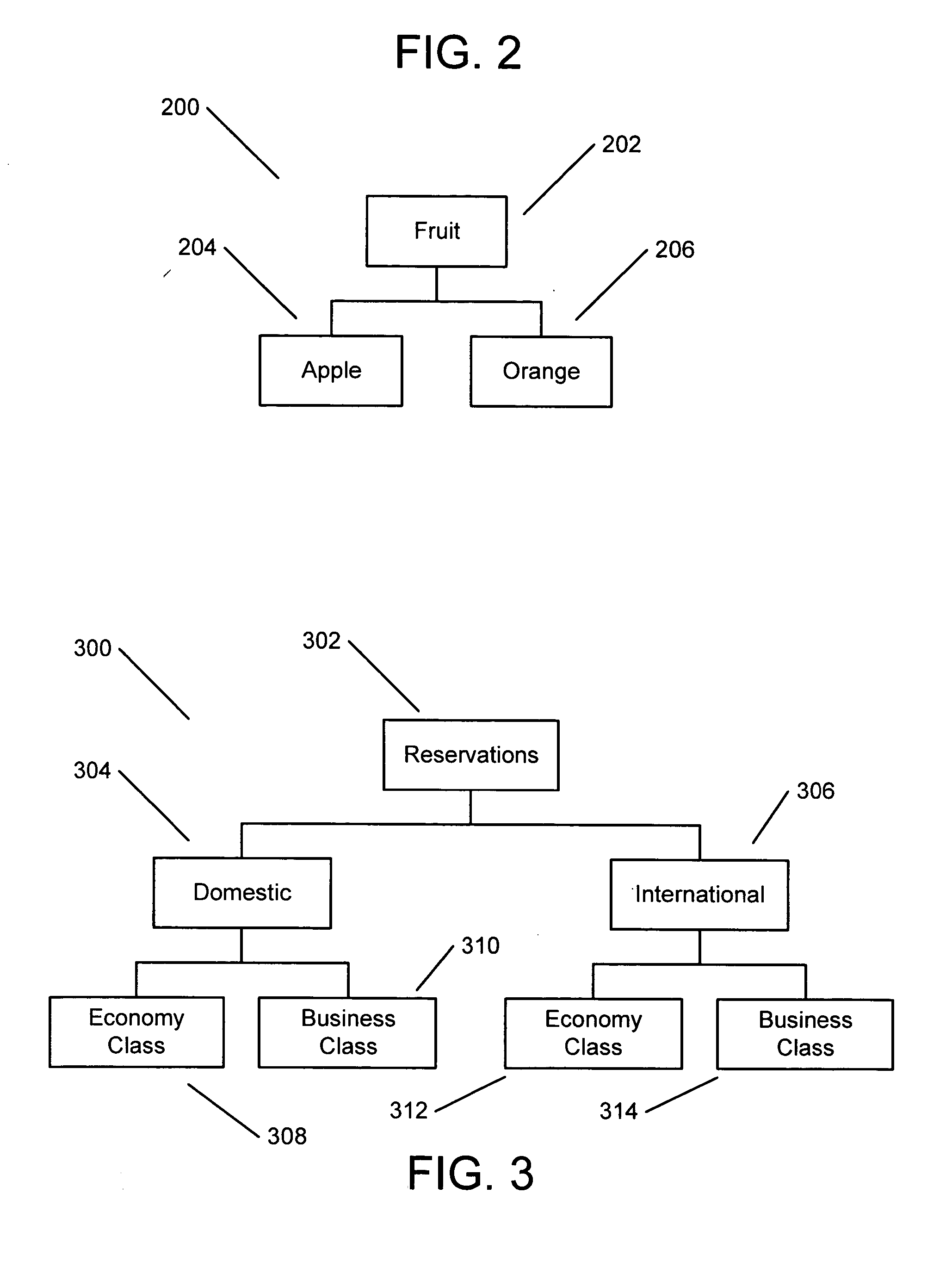Navigational learning in a structured transaction processing system
- Summary
- Abstract
- Description
- Claims
- Application Information
AI Technical Summary
Benefits of technology
Problems solved by technology
Method used
Image
Examples
example 1
Example 1 illustrates, in simplified form, how an index is used to jump among nodes with reference to FIG. 2. In this example, the hierarchical tree 200 represents a portion of a more complex tree specifically involving possible decision relating to fruit and a decision between two specific types of fruits, an apple and an orange.
In prior art hierarchical trees, navigation of this graph 200 would necessarily involve going through the “fruit” node 202 in order to reach the “apple”204 or “orange”206 nodes. As a result, assuming this simple tree was part of a larger tree for an on-line supermarket that prompted the user for what they wanted to purchase, the exchange would be both rigid and time consuming. For example, in response to a prompt “What do you want to purchase?” if the response was anything other than “fruit” traversal to the “fruit” node 202 could not occur. At the point in the tree that would lead to the “fruit” node 202, neither apple nor orange would be an acceptable ...
example 2
Having illustrated a simple “node jump” a more complex (and likely) scenario can be shown. In this example, the Example 1 graph of FIG. 2 applies, but relevant portion of the index is as follows: Fruit, 1A01 Apple, 1A02, 2F09 Orange, 1A03
As a result, there are two nodes relevant to the keyword “apple” one being the node 204 in the portion of the graph shown in FIG. 2 and one in the node uniquely identified as 2F09 located somewhere else in the hierarchy (not shown).
In this example, a user response containing the keyword “apple” would identify nodes with identifiers 1A02 and 2F09. In this case, and unlike the prior art, the verbal descriptions from both nodes would be presented to the user, likely in alternative fashion. Thus, if the user did not want an apple, they wanted apple cider, node 2F09 might be more appropriate because it is part of the “drinks” portion of the overall hierarchy.
Thus, presenting the user with the verbal description from both nodes would likely result ...
example 3
While the verbal descriptions associated with various nodes will generally be chosen to accurately represent the node, in accordance with certain variants of the invention, it is possible to create a situation where a user response takes them away from their ultimate desired goal. Nevertheless, the user can often still be brought to their goal quicker because the user need not rigidly trace through the hierarchy. This is accomplished by virtue of the “grouping” aspect.
This example illustrates the “grouping” aspect using a simplified graph 300 representing a portion of an airline reservation system as shown in FIG. 3.
In particular, the graph of FIG. 3 can be thought of as part of a very simple interactive voice response (“IVR”) system.
As described above, each node is uniquely identified, for example, by the numbers 1 through 7 and the identified terms “Reservation”, “Domestic”, “International”, “Business Class”, “Economy Class” are deemed the relevant keywords. Note, there is ...
PUM
 Login to View More
Login to View More Abstract
Description
Claims
Application Information
 Login to View More
Login to View More - R&D
- Intellectual Property
- Life Sciences
- Materials
- Tech Scout
- Unparalleled Data Quality
- Higher Quality Content
- 60% Fewer Hallucinations
Browse by: Latest US Patents, China's latest patents, Technical Efficacy Thesaurus, Application Domain, Technology Topic, Popular Technical Reports.
© 2025 PatSnap. All rights reserved.Legal|Privacy policy|Modern Slavery Act Transparency Statement|Sitemap|About US| Contact US: help@patsnap.com



